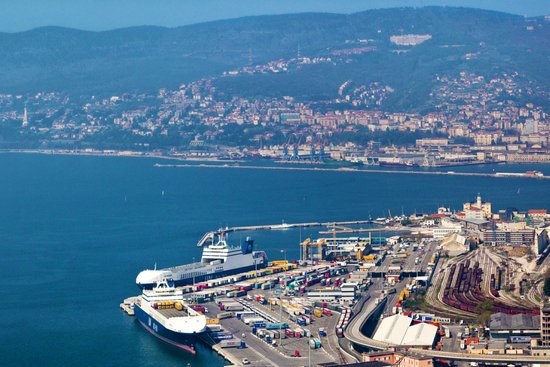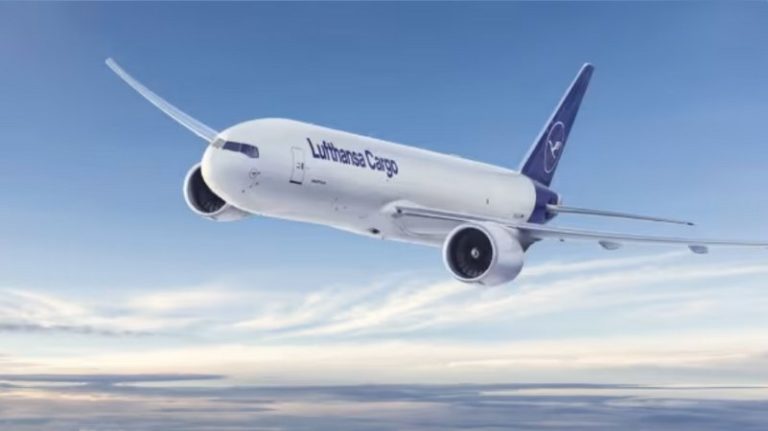The air cargo sector is experiencing a period of transformation and growth, driven by factors such as e-commerce, supply chain diversification, and global economic development. This is according to Boeing's "World Air Cargo Forecast 2024-2043," which provides a detailed outlook on trends that will shape the industry over the next two decades, outlining expansion scenarios, challenges, and opportunities for key regional markets.
Today, air cargo represents a small fraction of the total volume of global trade (less than 1%), but it plays a crucial role in terms of value, accounting for around 35% of global trade value. This discrepancy is due to the nature of goods transported by air, which mainly include high-value, perishable, or urgent items, such as technology products, professional equipment, and fresh produce, that cannot afford delivery delays.
In 2023, express operators accounted for 18% of global air cargo traffic, while dedicated cargo aircraft carried the majority of operations, transporting 54% of the total traffic measured in ton-kilometers. The COVID-19 pandemic underscored the importance of dedicated cargo aircraft, as the reduction in passenger flights limited the available belly capacity for cargo.
In terms of geographic areas, the most significant route remains between East Asia and North America, which represented 21% of global air cargo traffic in 2023. Growth for this market is expected to average 4.5% annually through 2043, driven by economic expansion in Asia and supply chain diversification, with production increasingly shifting from China to other Southeast Asian countries like Vietnam, Thailand, and Malaysia.
The second most important route is between East Asia and Europe, which accounted for 18% of global traffic. Cargo capacity between these regions has increased due to reduced passenger flights amid the intensifying Russia-Ukraine conflict. Boeing analysts forecast an average annual growth of 4% over the next two decades, supported by expanding economies in Europe and East Asia and the rise of e-commerce.
Air cargo between Latin America and North America is mainly driven by the trade of perishable goods, with 65% of operations passing through Miami. This market will see growth of 2.4% for exports from Latin America and 3.5% for imports to the region, supported by trade agreements like the United States-Mexico-Canada Agreement (USMCA).
Routes between Africa and East Asia have recorded one of the fastest growth rates, with a forecast of 7.2% annually through 2043. African imports from East Asia, particularly from China, are expected to triple over the next two decades, thanks to population growth and the untapped potential of e-commerce in Africa.
The increase in air cargo will lead to an expansion of the dedicated fleet. Boeing expects significant growth: by 2043, the number of cargo aircraft should increase by 66%, from the current 2,340 to 3,900 units. Of these new deliveries, approximately 45% will replace retired aircraft, while the remaining 55% will support traffic growth.
New cargo aircraft deliveries will be divided into three main categories. Standard Body aircraft, with a capacity of less than 40 tons, will account for almost 70% of passenger-to-freighter conversions. Medium Widebody and Large Widebody aircraft, with capacities exceeding 40 tons, will predominantly be new models. Large Widebody aircraft will represent most of the total global capacity, thanks to their efficiency and superior operational capabilities. The regions with the highest demand for new cargo aircraft will be Asia Pacific and North America, each accounting for 34% of expected deliveries, highlighting the central role of these areas in the development of global cargo transport.
Boeing's report identifies several factors that will contribute to the growth of air cargo over the next twenty years. One of the key drivers is e-commerce, with a projected growth rate of 9% annually through 2029. In particular, South Asia and Southeast Asia will see the highest growth rates. Supply chain diversification is another crucial factor: geopolitical tensions and pandemic-related disruptions have highlighted the vulnerability of global supply chains, prompting companies to diversify their production sources in other parts of Asia.
Economic development and industrialization in countries like India and African nations will lead to a significant increase in demand for air cargo, driven by the rising purchasing power of the population. India, in particular, anticipates a 7% annual growth in domestic traffic. The expansion of express transport networks will also play a key role in air cargo growth, especially in emerging markets where the demand for fast and reliable deliveries is continually rising.






























































